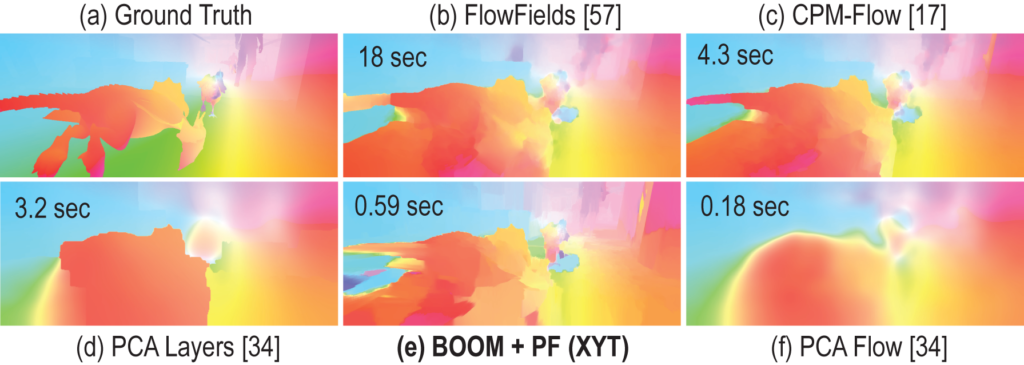Abstract

Spatio-temporal edge-aware (STEA) filtering methods have recently received increased attention due to their ability to efficiently solve or approximate important image domain problems in a temporally consistent manner – which is a crucial property for video-processing applications. However, existing STEA methods are currently unsuited for real-time, embedded stream-processing settings due to their high processing latency, large memory and bandwidth requirements, and the need for accurate optical flow to enable filtering along motion paths. To this end, we propose an efficient STEA filtering pipeline based on the recently proposed permeability filter (PF) which offers high quality and halo reduction capabilities. Using mathematical properties of the PF, we reformulate its temporal extension as a causal, non-linear infinite impulse response filter which can be efficiently evaluated due to its incremental nature. We bootstrap our own accurate flow using the PF and its temporal extension by interpolating a quasi-dense nearest neighbor field obtained with an improved PatchMatch algorithm, which employs binarized octal orientation maps (BOOM) descriptors to find correspondences among subsequent frames. Our method is able to create temporally consistent results for a variety of applications such as optical flow estimation, sparse data upsampling, visual saliency computation, and disparity estimation. We benchmark our optical flow estimation on the MPI Sintel dataset, where we currently achieve a Pareto optimal quality-efficiency tradeoff with an average endpoint error of 7.68 at 0.59 s single-core execution time on a recent desktop machine.
Copyright Notice
The documents contained in these directories are included by the contributing authors as a means to ensure timely dissemination of scholarly and technical work on a non-commercial basis. Copyright and all rights therein are maintained by the authors or by other copyright holders, notwithstanding that they have offered their works here electronically. It is understood that all persons copying this information will adhere to the terms and constraints invoked by each author’s copyright. These works may not be reposted without the explicit permission of the copyright holder.